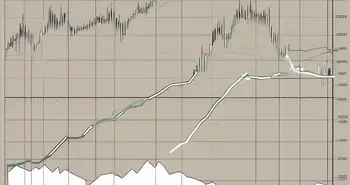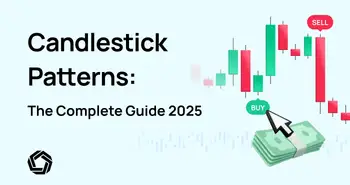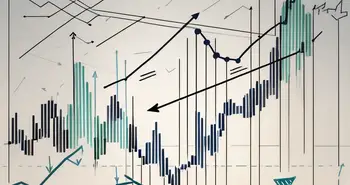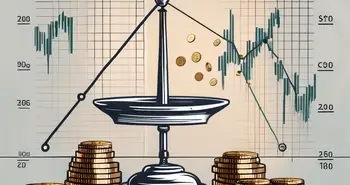Short Interest Ratio in Stock Trading: A Key Indicator for Market Sentiment and Volatility

The Short Interest Ratio (SIR) is a powerful metric in stock trading that can provide keen insights into market sentiment and potential future price movements. In this article, we will explore its definition, calculations, practical applications, and its significance in investment strategies. Understanding the Short Interest Ratio empowers investors to make informed choices and refine their trading strategies effectively.
Defining Short Interest Ratio: A Brief Overview
The Short Interest Ratio is a financial metric that expresses the total number of shares that have been sold short, divided by the average daily trading volume of that stock. This ratio gives investors an idea of how heavily a stock is shorted relative to its typical trading activity. A higher SIR can indicate greater bearish sentiment towards a stock, while a lower SIR might suggest that investors are more optimistic about the stock's future performance.
The prevalence and implications of short selling can vary widely. While it serves a legitimate purpose in market dynamics, it can also reflect skepticism regarding a company’s future prospects. For instance, if a company is facing potential bankruptcy, investors may short-sell its stock, betting its price will fall.
The Concept of Short Selling in Stock Trading
Short selling involves borrowing shares of a stock and selling them at the current market price, with the intention of repurchasing them later at a lower price. If successful, the trader profits from the difference. However, short selling carries significant risks, including the potential for unlimited losses if the stock price rises instead of falls.
For example, consider an investor who sells 100 shares of a company's stock at $50, expecting it to drop to $30. If successful, they would buy back the shares at the lower price, return them to the lender, and pocket the $2,000 difference. However, if instead the price rises to $70, the investor is facing potential losses of $2,000, plus any commissions or fees.
The Role of Short Interest Ratio in Market Analysis
The Short Interest Ratio plays a crucial role in market analysis by providing insights into market sentiment. A high SIR indicates that many traders are betting against the stock, which can signal that the market expectations are negative. This could be due to the company's poor financial performance, industry factors, or broader economic conditions.
Conversely, a low SIR might indicate that traders are less pessimistic about the stock, suggesting that investors perceive it as stable or growing. Thus, monitoring the SIR can help traders anticipate potential price movements and align their strategies accordingly.
The Mathematical Calculation of Short Interest Ratio
Calculating the Short Interest Ratio is straightforward, yet the implications can be profound. Typically, the formula used is:
Short Interest Ratio = Total Short Shares / Average Daily Trading VolumeThis ratio is usually expressed in days, indicating how many days it would take for all short positions to be covered based on the average trading volume. For example, if a stock has 1 million shares sold short and its average daily trading volume is 250,000 shares, the SIR would be 4. This means it would take approximately four days for all short sellers to cover their positions.
Components of the Short Interest Ratio
To understand the Short Interest Ratio fully, one must consider its components. The total number of short shares held by all investors reflects a market sentiment willing to bet against the stock. Meanwhile, the average daily trading volume indicates liquidity, suggesting how quickly those short positions can be covered.
A stock with a very high short interest compared to trading volume may exhibit high volatility, leading to scenarios such as short squeezes, where short sellers rush to cover their positions, leading to rapid price increases.
Interpreting the Short Interest Ratio Values
Interpreting the SIR requires context. A ratio higher than 6 can generally be seen as high, indicating that investors are betting heavily against the stock. Conversely, a ratio under 2 could imply that there is less skepticism about the company’s future prospects.
However, investors must be cautious. A high SIR by itself does not indicate a stock is a good investment; it simply reveals sentiment. For example, a company facing slow growth could have a high SIR, which might not necessarily signal a buying opportunity.
The Significance of Short Interest Ratio in Stock Trading
Understanding the significance of the Short Interest Ratio can shape trading strategies and investor sentiment analysis. This ratio can signal overbought or oversold conditions in the market, offering unique opportunities for traders to capitalize on market inefficiencies.
How Short Interest Ratio Predicts Market Trends
Trends often emerge from analyzing the Short Interest Ratio in conjunction with price movements. For instance, if a stock has a high SIR but over time begins to rise in price, it could indicate that short sellers are covering their positions due to new positive developments within the company.
Conversely, if prices drop while SIR remains constant or rises, this could suggest that negative sentiment is entrenched—pointing to further potential declines.
Short Interest Ratio and Investor Sentiment
The SIR directly reflects investor sentiment and market psychology. When markets see widened discrepancies between high short interest and rising prices, it could signal underlying changes such as positive earnings reports or favorable news releases, which can prompt a shift in sentiment.
Through understanding the SIR in relation to overall market movements, traders can better navigate bullish or bearish phases, informing their buy and sell decisions.
The Limitations of Short Interest Ratio
While the Short Interest Ratio can be a valuable tool, it is essential to recognize its limitations. The misunderstood metrics can lead to misinformed trading strategies and decisions.
Factors Influencing the Accuracy of Short Interest Ratio
Numerous factors can influence the accuracy of the Short Interest Ratio. The timing of reports is critical; short interest is only updated twice a month and may not reflect real-time market sentiment. Market shifts can happen quickly—sometimes faster than reporting dates.
Moreover, the SIR does not account for the quality of short positions. Not all short positions are created equal; some might be hedge strategies, while others might represent strong bearish sentiments. An intelligent interpretation considers such nuances.
Misinterpretations of Short Interest Ratio
Many investors mistakenly equate a high Short Interest Ratio with an imminent price drop. However, while a high SIR indicates greater short-selling activity, it can also lead to a short squeeze, where rapid price increases force short sellers to cover their positions, often exacerbating upward price trends.
Thus, basing investment decisions solely on the SIR can be misleading if not considered alongside other market indicators.
Practical Application of Short Interest Ratio in Investment Strategy
The Short Interest Ratio can be integrated into a comprehensive investment strategy, helping guide decisions in risk management and stock selection.
Incorporating Short Interest Ratio in Risk Management
Investors can utilize the SIR to assess risk in their portfolios. Monitoring short interest provides insight into how much risk exists due to potential short squeezes or heavy selling. For instance, in a volatile sector, understanding SIR can help investors in gauging whether they should manage their exposure to certain stocks actively.
By being aware of stocks with high SIR, traders can devise hedge strategies to mitigate risks associated with potential downside price movements.
Using Short Interest Ratio for Stock Selection
The SIR can serve as a useful metric for stock selection. Those interested in value investing can look for stocks that have a low SIR combined with strong fundamentals, potentially indicating undervaluation. Meanwhile, momentum traders might seek to target stocks with high SIRs that are rising, possibly leading to a short squeeze and generating quick profits.
Ultimately, the Short Interest Ratio is not just a number but a dynamic tool that reflects investor behavior and market sentiment, helping savvy traders navigate stock trading effectively.
FAQs
- What is the Short Interest Ratio?
The Short Interest Ratio is the total number of shares sold short divided by the average daily trading volume of those shares.
- Why is the Short Interest Ratio important?
The SIR provides insights into market sentiment, potential trends, and investor expectations regarding a stock’s future performance.
- How do you calculate the Short Interest Ratio?
You calculate it using the formula: Short Interest Ratio = Total Short Shares / Average Daily Trading Volume.
- What does a high Short Interest Ratio indicate?
A high SIR suggests that a significant number of investors are betting against the stock, potentially indicating negative market sentiment.
- Can the Short Interest Ratio be misinterpreted?
Yes, a high SIR does not always mean the stock will decline; it may indicate a potential for a short squeeze if the stock’s price begins to rise.
In conclusion, the Short Interest Ratio is a vital tool that can inform investors' decisions and shed light on market sentiment. By understanding its nuances, investors can effectively incorporate it into their trading strategies, making well-informed investment choices.
Ready to leverage the insights of the Short Interest Ratio in your trading strategy? Discover a new realm of possibilities with Morpher, the innovative trading platform that empowers you to trade stocks, cryptocurrencies, forex, and more with zero fees and infinite liquidity. Whether you're looking to short sell without interest fees or maximize your trades with up to 10x leverage, Morpher offers the tools you need for a unique and flexible trading experience. Sign up now and enhance your trading potential with your free sign-up bonus. Sign Up and Get Your Free Sign Up Bonus.

Disclaimer: All investments involve risk, and the past performance of a security, industry, sector, market, financial product, trading strategy, or individual’s trading does not guarantee future results or returns. Investors are fully responsible for any investment decisions they make. Such decisions should be based solely on an evaluation of their financial circumstances, investment objectives, risk tolerance, and liquidity needs. This post does not constitute investment advice.

Painless trading for everyone
Hundreds of markets all in one place - Apple, Bitcoin, Gold, Watches, NFTs, Sneakers and so much more.

Painless trading for everyone
Hundreds of markets all in one place - Apple, Bitcoin, Gold, Watches, NFTs, Sneakers and so much more.









